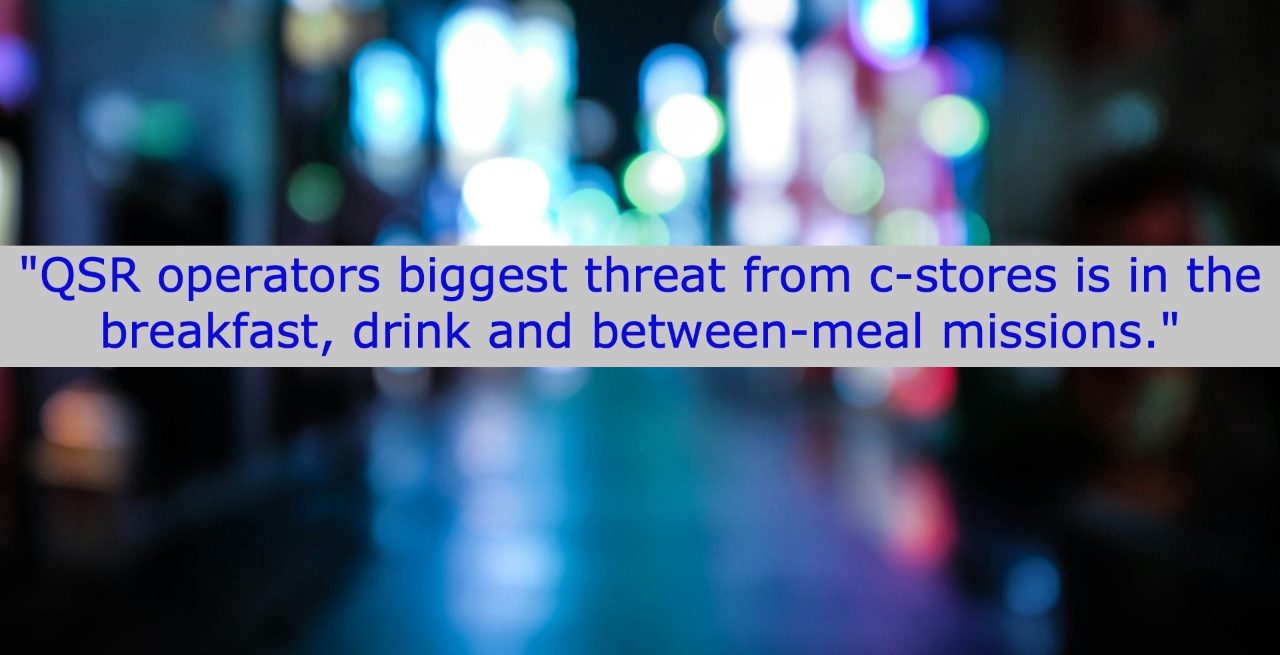Blurring Lines Between QSRs and C-Stores and Rising Influence of Fourth Place
4 Min Read By MRM Staff
Consumers are increasingly viewing convenience stores as go-to destinations for quick meals, a trend that is blurring the lines with QSRs, according to dunnhumby’s Retailer Preference Index (RPI) QSR Edition. The survey also emphasized the growing significance of the so-called fourth place for brands.
“QSR operators' biggest threat from c-stores is in the breakfast, drink and between-meal missions,” said Erich Kahner, Head of Competitive Strategy & Insights for dunnhumby. “If they want to stall the momentum of c-stores or prevent additional ones from gaining a foothold in the QSR space, QSRs need to up their game in those missions. I think customers have always wanted less friction in fulfilling their needs. If retailers give them more choice and options through a whole channel entering to serve the quick meal mission, customers will gladly embrace it, since it just makes getting a quick, tasty meal that much more convenient."
Kahner believes QSRs can gain inspiration from c-stores in the way they identify and manage variety and pricing/promotions.
“C-Stores have a stronger muscle in this than QSRs, because of their experience with their center store and refrigerated beverages. It’s a muscle we see them flexing in the quick meal mission, too.”
Among the key findings:
-
Top-performing QSRs are growing significantly faster: Over the past five years, retailers in the top quartile increased foot traffic by 5.9 percent annually. These brands also enjoy higher levels of customer trust and emotional connection, as seen in customer disappointment when locations close.
-
Dunkin’ dominates breakfast: 76 percent of Dunkin’ customers visit for breakfast, 14 percentage points higher than second-place Starbucks. Dunkin’ also ranks in the top 10 for coffee, snack, and dessert missions, making it the only brand to lead in a major meal occasion while also excelling in multiple secondary categories.
The RPI evaluated 58 U.S. QSRs including seven top convenience stores to assess how well each brand’s customer value propositions position them for sustainable growth. Five of the top 14 in the first quartile are convenience stores with Buc-ee’s topping the list followed by Kwik Trip, In-N-Out, Raising Cane’s, and Chick-fil-A. dunnhumby also collected data on emotional connection to each retailer, stated behavior at each retailer, and combined that with six years of foot traffic data sourced from Placer.ai. Flywheel provided financial data and customer insights from a survey of 10,500 U.S. consumers.
Being present in that fourth place, the mindspace, is critical now and will become more so as more digitally native people age up.
Buc-ee’s and Starbucks lead in visibility, dominating the fourth place — a term used for brands occupying a unique space in consumers’ minds and social media feeds. These brands stand out for their strong presence on social media and branded merchandise, as well as their quality offerings and product variety, according to the report. Having visibility within the fourth place is critical, particularly as it’s a way reach younger generations who spend a lot of time on social media platforms and rely on it for their news, discover brands and get recommendations there, Kahner said.
“The fourth place isn’t just about showing up in digital spaces, but it’s about showing up in communities, away from your locations, either with branded merchandise or events. Being present in that fourth place, the mindspace, is critical now and will become more so as more digitally native people age up.”
Pizza chains face unique challenges, the report found. While traditional pizza restaurants perform well in affordability and ease of transactions, they rank lower overall due to weaker scores in product and experience quality.
“Quality is about product, but it’s also about store experience,” said Kahner.“With their heavy reliance on delivery and carry-out, they forgo the opportunity to create an emotional connection with their customers with an in-store dining experience, and a great in-store dining experience can reflect positively on food quality. If they aren’t going to have in-store dining, how do they make that brief moment someone comes in to pick-up a memorable, high quality experience? Or how do they make that interaction with the delivery person a memorable one?”
Beyond specific category challenges, the report also highlights broader factors that separate high-performing QSRs from the rest. of the pack. The most successful QSRs excel in customer perception across six critical areas, ranked by importance: quality experiences and products, visibility, convenience and speed, affordability, product variety, and a seamless experience. While some brands focus on a single pillar, top performers typically excel in at least two of the four most important areas, according to the report.
To achieve better results, Kahner suggested brands take inspiration from the pillar winners and have a great retail banner brand tracker that comprehensively measures the customer value proposition, the dimensions of them relative to the competition.
“Understand which pillar you have vulnerabilities in, especially relative to your most relevant competition. Then drill further into that pillar to understand which facets or levers in particular you have the most opportunity. You have to keep your finger on the pulse of your and your competitors’ value propositions, so the market doesn’t move on without you.”

